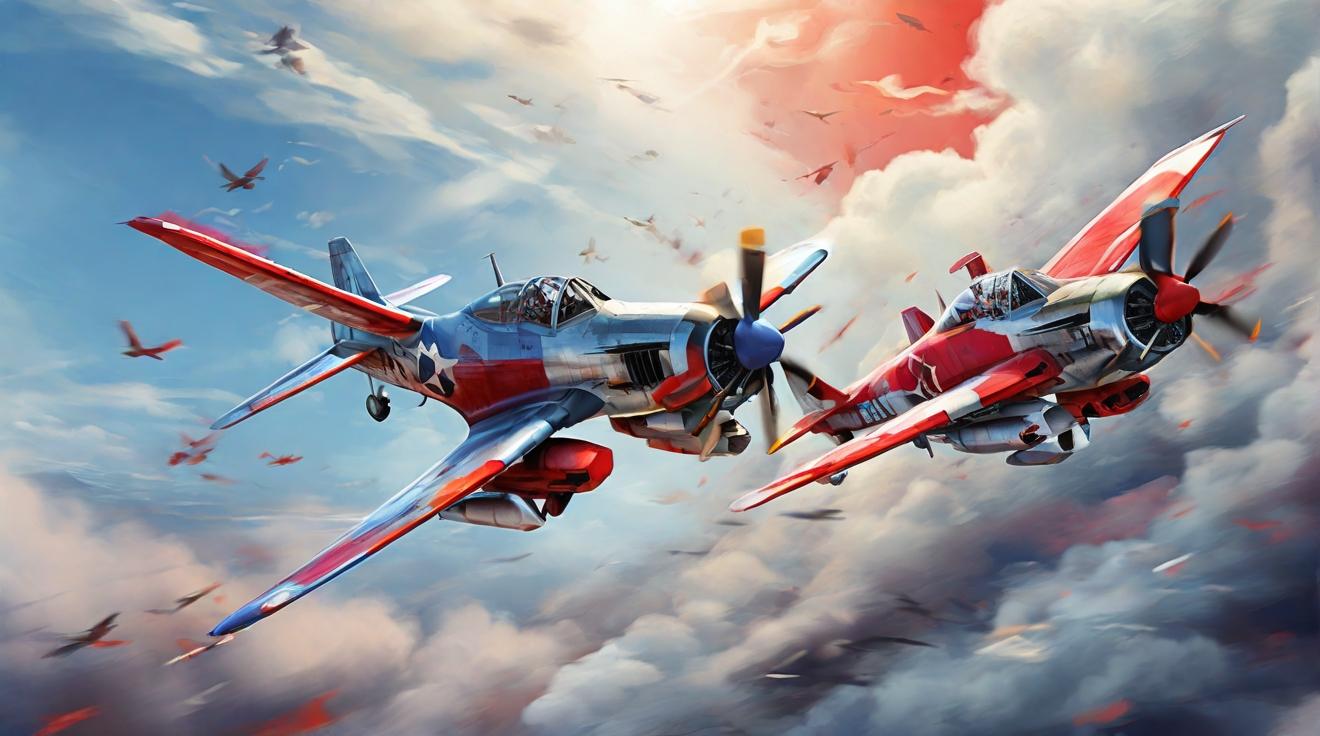U.S. Air Force Achieves Historic AI vs. Human Pilot Dogfight
In an unprecedented development within military aviation and artificial intelligence applications, the U.S. Air Force publicly acknowledged the successful execution of a dogfight between an AI-piloted fighter jet and a human-piloted aircraft. This milestone event, a part of the Air Combat Evolution (ACE) program initiated by the Defense Advanced Research Projects Agency (DARPA) in 2019, marks a significant leap towards integrating AI into combat aviation.
The historic dogfight tested the capabilities of a manned F-16 fighter jet against the X-62A VISTA, an advanced experimental F-16 variant equipped with sophisticated AI technology. This flight test episode, emphasizing the integration of live AI agents into combat systems, underscores the Defense Department's commitment to modernizing its air combat strategies through machine learning and autonomous systems.
Secretary of the Air Force, Frank Kendall, emphasized the groundbreaking nature of this AI milestone, describing it as a pivotal moment that will greatly influence the future of combat aviation. Despite the Air Force's discretion regarding the outcome of the engagement, the detail of a rigorous and incremental testing approach was shared, highlighting over 100,000 lines of flight-critical software changes and 21 test flights to validate the AI's performance.
The presence of test pilots in the X-62A, who did not intervene in the AI's operation, showcases the strong confidence in the system's reliability and safety. Lt. Col. Ryan Hefron, the ACE program manager from DARPA, emphasized the importance of building trust in AI technology for its practical application in real-world scenarios. This test is viewed as a foundational advancement towards enhancing aerospace AI technology, promising improved efficiency and safety in future military operations.
The testing and development of this AI initiative see a broad coalition of contributors from government agencies, private industries, and academia, including Johns Hopkins University, MIT’s Computer Science and AI Laboratory, Calspan Corp., and Lockheed Martin Skunk Works. This collaborative effort underlines the vast potential applications of autonomous systems in various aerospace tasks, extending beyond mere dogfighting capabilities.
As DARPA and the Air Force Test Pilot School continue with machine learning testing, the significance of this event cannot be overstated. It not only represents a crucial step forward in the integration of AI into military operations but also sets the stage for further advancements in autonomous combat technologies, potentially redefining the future of warfare.
This landmark achievement in AI and military aviation technology heralds a new era in combat tactics, making it a focal point for ongoing research and development aimed at ensuring the U.S. maintains its edge in technological warfare capabilities.
Analyst comment
Positive news:
The successful dogfight between an AI-piloted fighter jet and a human-piloted aircraft is a historic milestone in AI and military aviation. It demonstrates the potential of AI integration in combat aviation and highlights the Defense Department’s commitment to modernizing air combat strategies. The rigorous testing approach and the presence of test pilots showcasing confidence in the AI system’s reliability and safety contribute to building trust in AI technology. This advancement promises improved efficiency and safety in future military operations. The collaborative effort among government agencies, private industries, and academia underlines the vast potential applications of autonomous systems in aerospace tasks. This achievement sets the stage for further advancements in autonomous combat technologies, potentially redefining the future of warfare.
As an analyst, I predict that the market for AI technologies in military aviation will experience significant growth as more resources are invested in research, development, and implementation. Companies involved in AI technology and aerospace systems, such as Lockheed Martin, may see increased demand for their products and services. Additionally, there may be opportunities for collaboration and partnerships between government agencies, private industries, and academia to further advance AI integration in military operations. Overall, this development signals a positive and promising future for AI in combat aviation and technological warfare.













